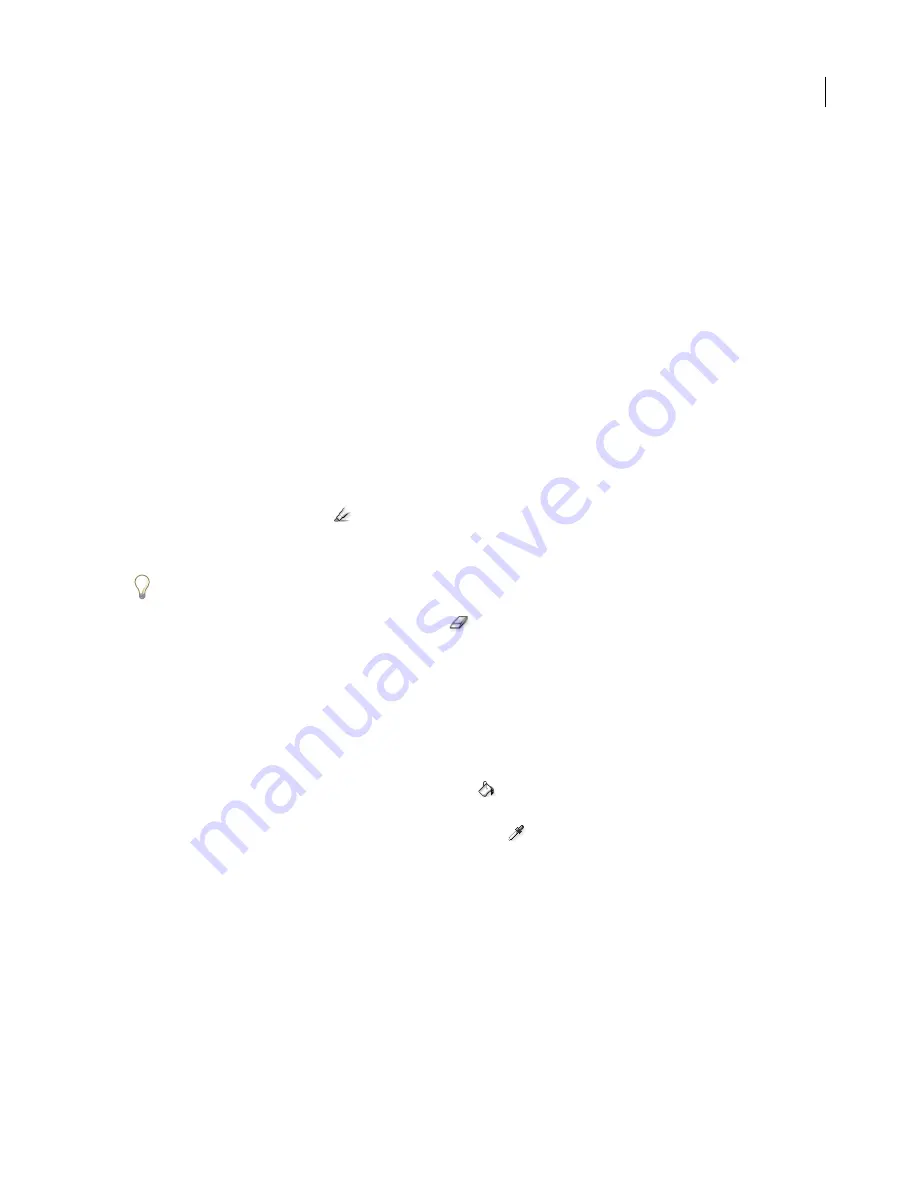
337
ADOBE PHOTOSHOP CS2
User Guide
Smart Highlighting
Select this option if you are highlighting a well-defined edge. The option helps you keep the
highlight on the edge, and applies a highlight that is just wide enough to cover the edge, regardless of the current
brush size.
Note:
If you use Smart Highlighting to mark an object edge that’s near another edge, decrease the brush size if conflicting
edges pull the highlight off the object edge. If the object edge has a uniform color on one side and high-contrast edges on
the other side, keep the object edge within the brush area but center the brush on the uniform color.
Specify Extraction options:
Textured Image
Select this option if the foreground or background of your image contains a lot of texture.
Smooth
Enter a value or drag the slider to increase or decrease the smoothness of the outline. It’s usually best to
begin with zero or a small value to avoid unwanted blurring of details. If there are sharp artifacts in the extraction
result, you can increase the Smooth value to help remove them in the next extraction.
Channel
Choose the alpha channel from the Channel menu to base the highlight on a selection saved in an alpha
channel. The alpha channel should be based on a selection of the edge boundary. If you modify a highlight based on
a channel, the channel name in the menu changes to Custom. Your image must have an alpha channel for the Channel
option to be available.
Force Foreground
Select this option if the object is especially intricate or lacks a clear interior.
3
Select the Edge Highlighter tool
, and draw to define the edge of the object you want to extract. Drag so that
the highlight slightly overlaps both the foreground object and its background. Use a large brush to cover wispy,
intricate edges where the foreground blends into the background, as with hair or trees.
Use either the Zoom tool or the Hand tool to adjust the view as needed.
If you need to erase the highlight, select the Eraser tool
, and drag over the highlight. To erase the entire
highlight, press Alt+Backspace (Windows) or Delete (Mac OS).
If the object has a well-defined interior, make sure that the highlight forms a complete enclosure. You do not need to
highlight areas where the object touches the image boundaries. If the object lacks a clear interior, highlight the entire
object.
Note:
You can’t highlight the entire object if you’ve selected Textured Image or Force Foreground.
4
Define the foreground area by doing one of the following:
•
If the object has a well-defined interior, select the Fill tool
. Click inside the object to fill its interior. Clicking
a filled area again with the Fill tool removes the fill.
•
If you’ve selected Force Foreground, select the Eyedropper tool
, and click inside the object to sample the
foreground color, or click in the Color text box and use a color picker to select the foreground color. This technique
works best with objects that contain tones of a single color.
5
(Optional) Click Preview to preview the extracted object. Zoom in as needed, and set any of the following preview
options:
Show
Choose a menu option to switch between views of the original and the extracted image.
Display
Choose a menu option to preview the extracted object against a colored matte background or a grayscale
background. To display a transparent background, choose None.
Show Highlight
Shows the object’s highlight in the preview.
Show Fill
Shows the object’s fill in the preview.
Содержание PHOTOSHOP CS2
Страница 1: ...Chapter 1 Copyright User Guide ...






























